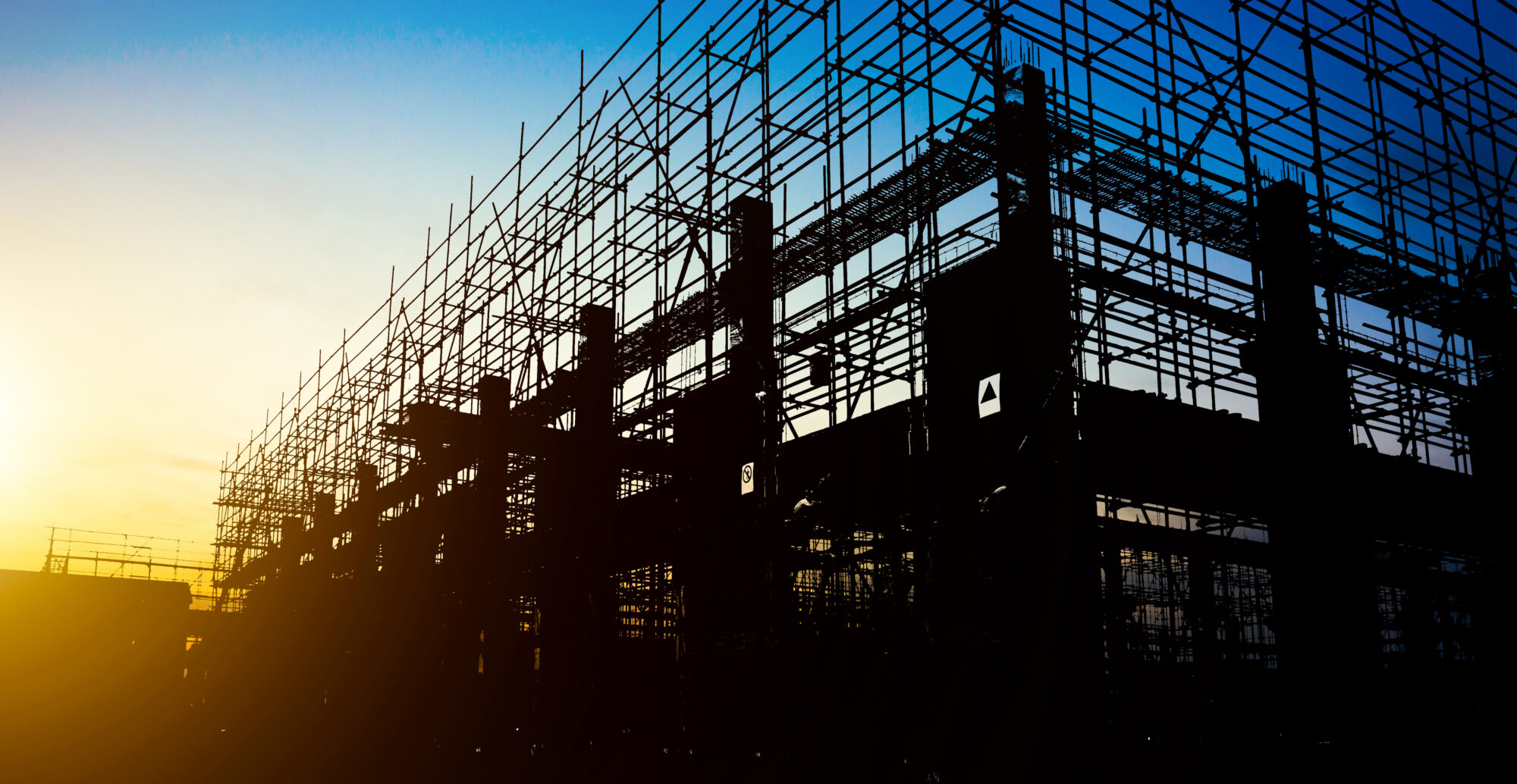Since humanity – at least, most of it (we’re looking at you, van lifers!) – started to appreciate the perks of the sedentary lifestyle, constructors spare no effort to develop better, greater, more convenient buildings. At the same time, equal efforts are being made to improve the construction process itself, making it more efficient, sustainable, and safer.
The construction industry is undergoing a profound transformation with the use of digital technologies, among which augmented reality plays a prominent role.
The construction industry, historically reliant on traditional tools like blueprints and physical models, is now embracing AR as a catalyst for efficiency and innovation. AR offers a remarkable bridge between the digital and physical worlds, enabling architects, engineers, contractors, and clients to collaborate in ways previously unimagined.
The shift towards augmented reality in construction
AR fosters enhanced communication by providing stakeholders with a shared platform where they can interact with 3D models, review plans, and identify potential issues in real time. Achieved this way seamless collaboration leads to reduced misunderstandings, quicker decision-making, and a more holistic approach to problem-solving.
The shift toward AR in construction is more than a technological upgrade; it represents a paradigm shift in the industry’s mindset. Architects can now see their designs come to life in context, enabling them to make informed adjustments before the ground is even broken. Contractors can experience the end result during the planning phase, streamlining the translation of design into reality. Clients can engage with virtual representations of their future spaces, ensuring that their vision aligns with the project’s direction. This industry-wide transformation is fostering a culture of innovation, where AR becomes an indispensable tool for enhancing project outcomes and pushing the boundaries of what is achievable in construction.
Augmented reality in construction
Augmented reality marks a revolutionary shift in the way the construction industry approaches design, planning, and execution. Unlike virtual reality, which creates entirely digital environments, AR overlays digital information onto the real-world environment. In the construction context, AR offers distinct advantages over traditional methods, such as 2D blueprints and physical models.
One of the key advantages of AR is its ability to enhance collaboration among project stakeholders. Architects, engineers, contractors, and clients can view and interact with the same virtual models in real time, regardless of their location. This level of collaboration fosters better communication, reduces misunderstandings, and accelerates decision-making processes. The real-time nature of AR allows for instant feedback and adjustments, leading to more accurate design iterations and improved project outcomes.
Moreover, AR transforms the way complex designs are visualized and understood. In the past, architects struggled to communicate intricate designs to non-technical stakeholders, often resulting in misinterpretations. AR bridges this gap by providing an interactive, three-dimensional representation of the design. This has proven particularly valuable during the initial design stages, where stakeholders can explore and experience the proposed structure before construction begins. By offering a dynamic and immersive experience, AR helps teams identify potential design flaws early on, reducing the likelihood of costly revisions during the construction phase.

presentation to try
Nsflow in action
Augmented reality in construction – case studies
Next-gen design
AR-powered solutions like the Morpholio app utilize augmented reality in advanced drawing tools for convenient perspective finding and scaling, enabling complex sketching with virtual perspective grids. AR for construction allows for rapid changes in design, resulting in long-term savings on major reworks should incompatibilities be spotted later on in the process. Another solution empowering construction professionals in creating and sharing site imagery with AR add-ons in HoloBuilder, enabling overlaying digital blueprints on the construction site.
Virtual site inspections
Augmented reality in construction supports remote acceptance and supervision of building sites. Equipped with AR devices, on-site technicians can asses the site, remaining in real-time contact with remote engineers overseeing the process. The use of augmented reality allows for cost reduction and more efficient workforce management.
Building Information Modeling (BIM)
BIM constitutes a digital compilation of physical and functional features of a construction. In this scope, augmented reality supports the prevention of errors, adding computer-generated imagery from BIM or CAD directly to the user’s view. As a result, the digital model presents all crucial characteristics of the facility, enabling convenient design, construction, and operation, communicating all of its details. Thanks to AR, clients get to see a realistic view of the project’s outcome and can submit their requests for changes prior to construction star.
Project walk-throughs
Using AR-ready mobile devices or dedicated wearable pieces, users can perform walk-throughs of the whole project to examine its details. Wandering through the digital surroundings, users can not only assess the structure of the designed structure, but also verify its functionality and ergonomics.
Safety training
Solutions like Nsflow are used across industries to boost employee safety and support occupational health and safety training. Utilizing AR in construction allows trainees to learn the best and safest ways to perform tasks in their workplace without risking accidents. While learning by doing under the watchful eye of AR, new hires train muscle memory and learn in a more engaging way compared to the traditional classroom and paper-based model.
Benefits of AR for construction
Efficiency enhancement
The implementation of AR in construction projects directly contributes to improved efficiency throughout the project lifecycle. AR technology streamlines communication by providing real-time access to vital project information, reducing the need for time-consuming back-and-forths. Workers on-site can visualize complex design details, installation instructions, and safety guidelines instantly through AR interfaces, leading to quicker and more accurate task execution. This efficiency boost minimizes project delays, enhances productivity, and ultimately shortens project timelines.
Risk reduction and enhancing safety
Safety is a paramount concern in the construction industry, and AR plays a significant role in mitigating risks. By overlaying safety information and hazard warnings onto workers’ views of their surroundings, AR enhances situational awareness. For example, workers wearing AR headsets can see potential hazards marked in real time, such as live electrical wires or hazardous materials. This real-time safety feedback results in fewer accidents, reduced injuries, and safer working conditions. Moreover, AR’s ability to provide guided instructions for equipment operation further minimizes the likelihood of accidents caused by human error.
Cost savings and waste reduction
The financial benefits of AR in construction are substantial. By facilitating accurate and efficient work processes, AR significantly reduces rework and design errors. Contractors and architects can identify potential clashes between systems and structures early in the design phase, preventing costly modifications during construction. Additionally, AR aids in optimal resource allocation by allowing real-time tracking of material usage and inventory levels. This data-driven approach leads to reduced material wastage and more accurate cost estimations, ultimately resulting in cost savings for construction projects.
Collaboration improvement
In today’s globalized construction environment, projects often involve multidisciplinary teams spread across different locations. AR bridges geographical gaps by enabling remote collaboration in real time. Team members can virtually join meetings and design reviews, annotate models, and provide input regardless of their physical location. This level of collaboration fosters a holistic understanding of the project, facilitates knowledge sharing, and ensures that decisions are made collectively, leading to more cohesive and successful outcomes.
Sustainability advancements
Sustainability is a growing concern in the construction industry, and AR contributes to more environmentally friendly practices. By visualizing energy-efficient designs and material choices through AR interfaces, architects and engineers can make informed decisions that prioritize sustainability. Additionally, AR can aid in construction site analysis, assessing the impact of a building on its surroundings and identifying opportunities for eco-friendly design integration. This holistic approach to sustainability aligns with industry trends and regulatory requirements, supporting a more responsible and conscientious construction process.
Augmented reality’s future in construction
The evolution of AR in the construction industry is poised to continue at a rapid pace. As technology advances, we can expect to see the development of more sophisticated AR hardware and software solutions. Holographic displays, for example, might replace or complement existing AR headsets, enabling users to interact with digital models in even more immersive ways. Wearable AR devices could become more ergonomic and seamlessly integrated into workers’ gear, enhancing their efficiency on-site.
The future of AR in construction also holds potential for greater integration with Building Information Modeling (BIM) systems. This could result in more seamless data exchange between AR environments and the digital models used during the planning and design phases. Additionally, advancements in AI and machine learning may enable AR systems to provide even more accurate real-time data analysis and predictive insights, further enhancing decision-making and problem-solving on construction sites.
The takeaway
Augmented reality in the construction industry brings the field to new levels. With the support of advanced digital technologies, designers and civil engineers can enhance collaboration, visualization, safety, and efficiency. AR is already making a substantial impact by revolutionizing design visualization, improving on-site guidance, and enhancing client interactions. The benefits of AR in construction—efficiency gains, risk reduction, cost savings, improved collaboration, and sustainability advancements—are undeniable.
With augmented reality, the construction industry can build a future that is safer, more sustainable and arises from pillars solid as never before.
Want to incorporate AR into your operations? Book your free demo and stay ahead of your competition.


























